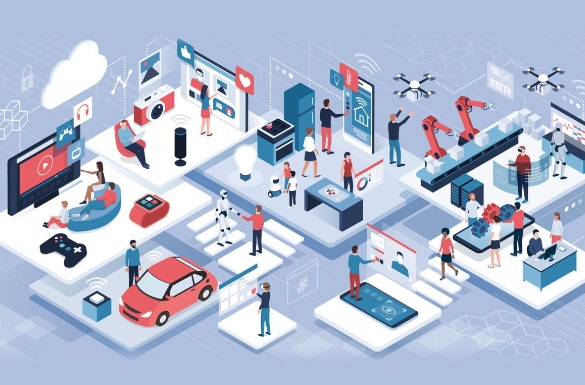Introduction: Pioneering the Smart City Revolution
The rapid advancement of technology has ushered in a new era of urban development – the era of smart cities. At the forefront of this urban revolution is the Internet of Things (IoT), a transformative force that promises to reshape cities into efficient, sustainable, and interconnected hubs of innovation. In this article, we delve into the concept of smart cities driven by the Internet of Things, uncovering the remarkable potential, benefits, and challenges that come with crafting smarter, more responsive urban environments.
The Internet of Things: A Glimpse into the Future
The Internet of Things refers to the network of interconnected devices, sensors, and objects embedded with technology that enables them to collect and exchange data. In the context of smart cities, IoT becomes a dynamic ecosystem that harmonizes various components of urban life – from transportation and energy management to waste disposal and public safety. By facilitating seamless communication between devices and systems, IoT serves as the foundation for building cities that respond intelligently to the needs of residents and businesses.
Key Pillars of Smart Cities:
-
Smart Infrastructure: IoT-enabled sensors and devices can monitor the structural health of buildings, bridges, and roads in real time. This allows for proactive maintenance and ensures the safety of citizens.
-
Efficient Transportation: IoT-driven traffic management systems optimize traffic flow, reduce congestion, and enable smart parking solutions. Connected vehicles communicate with each other and infrastructure, paving the way for safer and smoother mobility.
-
Energy Management: Smart grids powered by IoT technology enhance energy distribution, monitor consumption patterns, and facilitate the integration of renewable energy sources, contributing to energy efficiency and sustainability.
-
Waste Management: IoT sensors in waste bins and collection trucks streamline waste management processes. They optimize routes, reduce operational costs, and promote eco-friendly disposal practices.
-
Public Safety: IoT-enabled surveillance cameras, emergency response systems, and predictive analytics enhance public safety measures. Authorities can swiftly respond to incidents and proactively prevent potential threats.
Benefits of Smart Cities:
-
Resource Efficiency: Smart cities leverage IoT data to optimize resource consumption, reducing waste and conserving energy and water.
-
Enhanced Quality of Life: Smart cities prioritize citizen well-being by improving transportation, healthcare, and public services, ultimately leading to an improved quality of life.
-
Sustainability: IoT-driven solutions contribute to environmental sustainability by promoting cleaner energy sources, reducing pollution, and minimizing carbon footprints.
-
Economic Growth: The innovation spurred by smart city initiatives attracts investments, fosters entrepreneurship, and generates job opportunities in technology and related sectors.
-
Data-Driven Decision-Making: The wealth of data collected by IoT devices empowers city planners and administrators to make informed decisions for urban development and improvement.
Challenges and Considerations:
-
Privacy and Security: The interconnected nature of IoT raises concerns about data privacy and cybersecurity. Safeguarding sensitive information is paramount to building trust in smart city ecosystems.
-
Digital Divide: Ensuring equitable access to IoT technologies is crucial to prevent creating a digital divide between different segments of the population.
-
Interoperability: Integrating diverse IoT systems and devices from various vendors presents challenges in terms of compatibility and seamless communication.
-
Regulatory Frameworks: The rapid evolution of IoT technology requires agile and adaptable regulatory frameworks to address emerging issues and concerns.
Conclusion: Paving the Path to Urban Ingenuity
The concept of smart cities powered by the Internet of Things is not a distant dream; it is a rapidly evolving reality that holds the promise of creating more efficient, livable, and sustainable urban spaces. As cities around the world embark on the journey of IoT-driven transformation, they stand at the forefront of urban ingenuity, harnessing technology to elevate the well-being of citizens and shape a future where connectivity, innovation, and sustainability converge. The era of smart cities has arrived, and with the Internet of Things as its cornerstone, the possibilities for urban innovation are boundless.


No comments yet